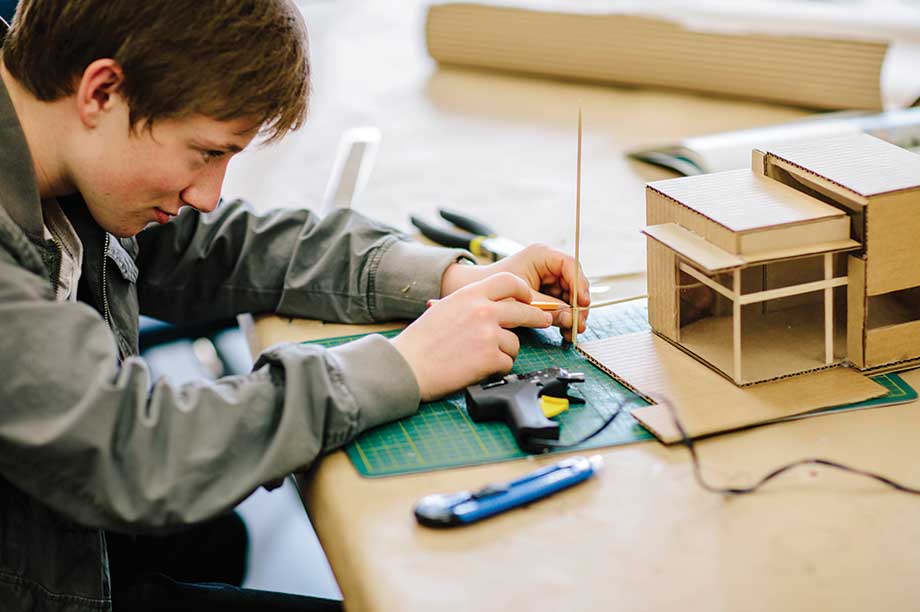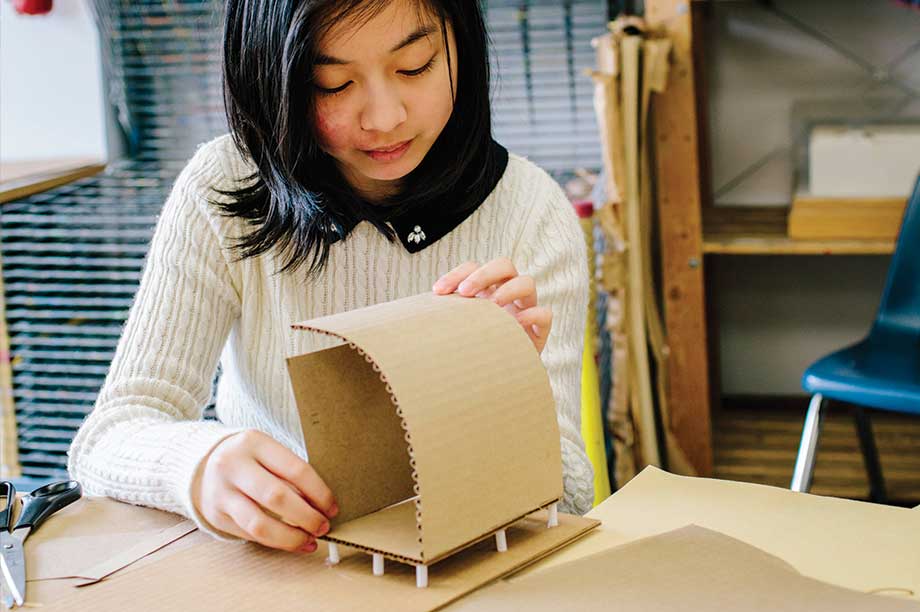
Arts Umbrella Architecture instructor Graham Smith talks about sustainable design, tiny houses, and how to keep an open mind
Dropping into the Architecture and Environmental Design class on a (somewhat) sunny Saturday afternoon, instructor Graham Smith is sitting back in a chair observing and commenting on his students’ projects. Today they’re starting work on a project called “Tiny Houses,” which stemmed from an event collaboration at Science World with the BC Tiny House Collective.
The parameters? Design a 100-square-foot house that holds it all. For a program that’s focused on sustainable design and architecture, it’s a natural fit. And while the project elicited a few well-meaning groans when announced (100 square feet is tiny, after all), the students are using what Smith’s taught them and applying it to the paper, glue, and cardboard in front of them.
“It’s all the same steps to build a small building as it is a large building,” explains Smith. “You still have to bring everything to it, like gas and electrical. A tiny house can be inefficient at some level. So we’re trying to think about it in a bigger picture.” Of course, tiny houses are sustainable on account of their size—they use less material and fewer resources to heat—but the class is also thinking about tiny houses in terms of their land use.
“I try to encourage the students to connect what they’re doing to their immediate surrounding,” says Smith. “If it’s on the ground, use the ground. Let the house open up to the space and expand the visuals, especially in a small unit. It gives you an opportunity to maximize the space.”
To expand on the sustainability model of tiny houses, Smith has some added project parameters for his students. If the tiny house they design is in an urban setting, then it should be designed to be part of an accretion of houses—in a tower or stackable or mobile in some way. If it’s rural, then the tiny house should be built where otherwise a large house might have stood. In that case, the tiny house should use its land allotment to further its sustainability.
Smith, who has 25 years of architectural experience, was an early adopter of sustainable design. His passion and cryptic humour combine to create a sustainable environment for his students. Several students have returned to his class over and over. “I call them repeat offenders,” jokes Smith.

But the mood in the class is light. Smith walks about the room and makes conversation with the kids. If they have a model in progress, he sheds light on what works and what the students should watch out for. Today, he explains heat traps to one girl and recommends how to keep things to scale without measuring every tiny object to another.
Overall, Smith tries to push the kids away from creating boxes. “People will start with that because that’s what they know,” he explains. But he says the class has unique ideas too. “Some students don’t need to be pushed because they have eccentric ideas.”
While Smith doesn’t delve into the history of architecture in a lecture style, he will pull up buildings by a particular architect when a student’s work reminds him of someone. “We talk about architects, but mostly we talk about the background of sustainability,” he says.
“The thing about paper architecture is that while it may not always be buildable, it advances ideas about architecture,” says Smith. It can take technology and engineering time to catch up to what architects are imagining. “Frank Gehry may not have been able to build his designs in the 1950s,” says Smith, “But we can now.”
To see the teen Architecture and Environmental Design class students in action, drop by go, go Tiny at Science World on Saturday, May 20. You may just see the designs of the future.